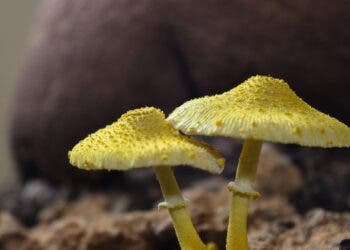If we manage to keep global warming within 1.5 degrees Celsius (the ambitious goal of the Paris Agreement), then we can save the vast majority of the world’s plant and animal species from climate change, a new analysis concludes.

The world is heating up — it’s no longer a case of if this is happening, but rather how fast can we limit the damage. Two realistic scenarios are that we limit global warming to 2C (2 degrees Celsius) or 1.5C. These are also the goals of the international Paris Agreement: countries have pledged to play their part to limit global warming to 2C, and have also agreed on the extended 1.5C goal.
Most previous studies have focused on how ecosystems will behave at 2C, and few (if any) have focused on insects — insects are often neglected or understudied, even though they offer vital ecosystem services such as pollinating crops and flowers and serve as part of the food chain for other birds and animals.
Now, a new study has analyzed the more optimistic scenario, and also focused on insects. Researchers at University of East Anglia in the UK and James Cook University in Australia studied some 115,000 species including 31,000 insects, 8,000 birds, 1,700 mammals, 1,800 reptiles, 1,000 amphibians and 71,000 plants. Their conclusions are intriguing, and mostly optimistic. Lead researcher Prof Rachel Warren, from the Tyndall Centre for Climate Change Research at UEA, said:
“We wanted to see how different projected climate futures caused areas to become climatically unsuitable for the species living there. We measured the risks to biodiversity by counting the number of species projected to lose more than half their geographic range due to climate change.”
“We found that achieving the ultimate goal of the Paris Agreement, to limit warming to 1.5C above pre-industrial levels, would reap enormous benefits for biodiversity – much more so than limiting warming to 2C.”
Importantly, insects will particularly benefit if the upper climate change limit is 1.5C instead of 2C. Of course, things would still not be good, but the brunt of the damage would be averted.
“Insects are particularly sensitive to climate change. At 2C warming, 18 per cent of the 31,000 insects we studied are projected to lose more than half their range. This is reduced to 6 per cent at 1.5C. But even at 1.5C, some species lose larger proportions of their range.”
However, that’s a big if. Countries agreed to try and limit emissions, keeping warming down to 2C, but not everyone agrees that that will be enough — some scientists argue that following the Paris Agreement won’t do nearly enough to reach its objective. Furthermore, the situation is complicated by President Trump’s announcement to take the US out of the Paris Agreement. Even if all these things fall into place, we will still be at 2C, not 1.5C, so we would still need more.
“The current global warming trajectory, if countries meet their international pledges to reduce CO2, is around 3oC. In this case, almost 50 per cent of insects would lose half their range.”
“This is really important because insects are vital to ecosystems and for humans. They pollinate crops and flowers, they provide food for higher-level organisms, they break down detritus, they maintain a balance in ecosystems by eating the leaves of plants, and they help recycle nutrients in the soil.”
Ultimately, it won’t be just the biodiversity that suffers, but ourselves as well.
“If temperatures rise by 3oC, ecosystem services provided by insects would be greatly reduced. Other research has already shown that insects are already in decline for other reasons, and this research shows that climate change would really compound the problem.”
Journal Reference: ‘The projected effect on insects, vertebrates and plants of limiting global warming to 1.5oC rather than 2oC’ is published in the journal Science on May 18, 2018.






